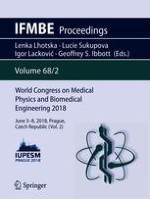2019 | OriginalPaper | Buchkapitel
Development of a Modular Bionic Prototype Arm Prosthesis Integrating a Closed-Loop Control System
verfasst von : Christoph Kast, Bernhard Rosenauer, Helmut Meissner, Weerayot Aramphianlert, Matthias Krenn, Christian Hofer, Oskar C. Aszmann, Winfried Mayr
Erschienen in: World Congress on Medical Physics and Biomedical Engineering 2018
Verlag: Springer Singapore
Aktivieren Sie unsere intelligente Suche, um passende Fachinhalte oder Patente zu finden.
Wählen Sie Textabschnitte aus um mit Künstlicher Intelligenz passenden Patente zu finden. powered by
Markieren Sie Textabschnitte, um KI-gestützt weitere passende Inhalte zu finden. powered by
